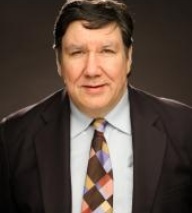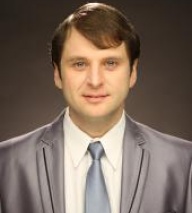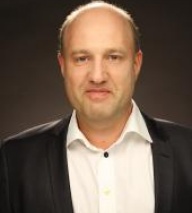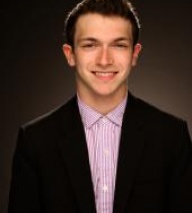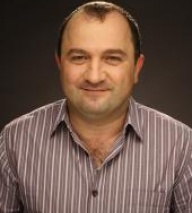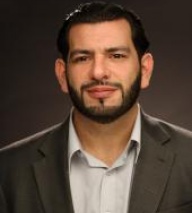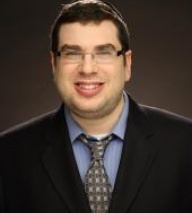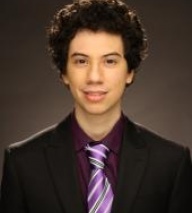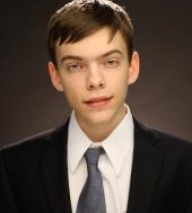2013 U.S. Championship Player Bios
Larry Christiansen
Larry Christiansen is an American master of attack. He even published two widely praised books on the subject of attacking chess, Storming the Barricades and Rocking the Ramparts. In chess, there is much debate as to the relative importance of talent and hard work. A strong GM needs both but sometimes a player seems more talented than hard working or vice-a-versa. Larry falls into the talented category. He improved so quickly as a teenager that he earned the Grandmaster title at the age of 21, skipping right over the usual stepping stone title, International Master. A three-time U.S Champion, Larry also won many European tournaments.
He won the prestigious Linares tournament twice, once winning clear first and the other time tying with Anatoly Karpov. He even lived in Germany for a while, playing in numerous European tournaments and in the most prestigious team competition, the Bundesliga. He even defeated Karpov in a 14-move miniature! Larry is a frequent commentator on chess.fm, a popular chess writer and an occasional coach. He participates in the U.S. Amateur Team East each year with his wife Natasha, a strong A player and lawyer. He and GM Alex Stripunsky were the first elite American GMs to join the U.S Chess League, where Larry led the Boston Blitz. A popular person on the chess scene, Larry likes to have fun between the rounds of any event, whether it’s exploring a foreign city with Natasha, finding the best steak in town, or improving his ICC one-minute record. He has a wry sense of humor helped by his ability to simultaneously complain about and enjoy any activity.
Yury Shulman
You wouldn't expect former U.S. Champion and Olympic medallist, Yury Shulman, a comp-sci and business graduate to be superstitious. But he raves about the "lucky car" at the 2006 U.S Championship in San Diego. He drove to the tournament each afternoon with soon-to-be-champions, Alex Onischuk and Anna Zatonskih. Yury won his 32-player group and Alex won his, resulting in a friend vs. friend battle. Why did Yury lose? Probably because he sat in the back seat on the ride to the final. Yury's moment at the top of the crosstable came soon enough. In the 2008 U.S. Championship in Tulsa, Oklahoma, Yury netted clear first with uncompromising play, and he fell just short at the 2010 U.S. Championship, finishing second to GM Gata Kamsky.
Yury moved from his native Belarus to the United States in 1999 to attend University of Texas at Dallas (UTD), a three-time national championship college team. UTD takes chess very seriously. In addition to offering scholarships to top players like Yury, UTD wants to see chess taught in elementary schools across the country.
Although Yury's second-place finish in the 2006 U.S. Championship was a surprise to most fans, those who followed his performance in the 2005 World Cup in Russia weren't surprised at all. Yury went up against some of the top players in the World in this knockout tournament and defeated three higher rated GMs to advance to the round of 32, including a very impressive victory over former FIDE World Champion Alexander Khalifman. Despite eight other Americans competing in this event, only Gata Kamsky was able to advance further than Shulman.
Yury credits his excellent results in the past few years to his chess students. Yury has been teaching since he graduated from UTD. He also founded the organization, Chess Without Borders. Teaching has helped him see chess in a different way, and he even came up with opening novelties while working with his students. Some chess professionals only teach because of the financial reward, but Yury claims that even if he were rich, he'd still coach. To learn from Shulman, you can buy his book Chess! Lessons From a Grandmaster. (Read Elizabeth Vicary's CLO review.)
Shulman also coached the 2006 Women's Olympiad team in Turin to an impressive fourth place finish. In 2008, Yury joined the men's Olympic team and helped lead them to a fantastic bronze medal finish. Yury scored the final clutch win over Ukraine's board four, Efimenko to clinch bronze.
Relying mostly on 1.d4 as white and the French defense as black, Yury possesses the repertoire of a solid, positional player. But don't let that deceive you! Yury is about as aggressive as they come, and could have easily been an e4 player in another life.
Alexander Shabalov
If you're watching the first board of an open tournament, and the pieces are flying in all directions, it's a good bet that Shabalov is one of the players. The Latvian-born GM thrives on wild games. Shabalov himself said: "If the position after my move becomes more complicated, then the game is going in the right direction." GM Nick DeFirmian demonstrated the respect fellow GMs have for "Shabba" when he called a position so crazy that only Shabalov or Fritz could play it well.
Alexander is from Riga, the birthplace of the Latvian wizard, Mikhail Tal. Tal is the most celebrated World Champion (with the possible exception of Garry Kasparov), because of his wonderful personality and his exciting, no-holds-barred chess. "He can only take them one at a time," Tal remarked once, when someone asked how he could leave so many pieces hanging. Shabalov and his famous contemporary Alexei Shirov had the luxury of studying with Tal personally and both inherited his thrilling style.
Alexander is well-versed in 1.e4 and 1.d4, and he usually picks the sharpest lines. As black, he's most known for his well analysed Kalashnkovs and Sveshnikovs, though he also plays the French, Double King Pawn, and other Sicilian lines like the Classical System, the Dragon or the Paulsen. Alex's laid-back personality might mislead you into thinking he doesn't do much homework. But these lines require hard work, and Alex is up to the job- he has even created totally new theory in the Kalashnikov Sicilian.
Shabalov rarely proposes or accepts early draw offers. In the 2003 U.S. Championship, there were eight Grandmasters vying for first place. After fifteen minutes, the stage was almost empty. All the other contenders had drawn their games, ensuring them a decent payday but depriving fans of exciting, high-stakes chess. Shabalov's game was the exception. He played a six-hour slug fest against Varuzhan Akobian, ending in a victory for Shabalov. In addition to the 25K he won for first place, main sponsor Erik Andersson awarded Alex and Varuzhan $5,000 each for their fighting spirit. Shabalov won clear first in the U.S. Championship four years later in Tulsa, Oklahoma, besting Kudrin in the final to edge out the defending champion, 2006 Champ Alexander Onischuk.
In 2003 Shabalov lived up to his championship title by placing clear first in the Chicago and North American Opens, and only tying for first in the World Open. Winning clear first with tournament points (not on tiebreak or blitz playoff) in a Chicago or World Open is rare; The hectic schedules and top-heavy entries in most American opens usually result in massive ties. Shabalov wins clear more often than GMs of similar strength, because of his uncompromising style and burning desire to take home all the clams.
The downside of his style is that Shabalov loses, even to lower-rated players, more often than his rating would suggest. Check out the Chess Life Online article "How to Beat Shabalov" for more on this odd phenomenon.
Until recently, Alexander was one of the few American GMs who rarely taught or wrote, relying mostly on his tournament winnings for his living. This all changed when he became a co-owner of the store House of Chess in the Great Northern Mall in Cleveland. Shabalov makes the two-hour drive from his hometown Pittsburgh once or twice a week to give lectures, conduct simuls and coach members of the club/store. House of Chess is beautifully designed and adjacent to Starbucks and Foot Locker-this is a good sign for the rising popularity of chess.
Shabalov has milked the chessplayer's lifestyle to its extreme. Travelling constantly throughout the United States, Europe, Asia and the Caribbean, he allows ample time for fun in the less serious tournaments. In prestigious events, like the Olympiad or the U.S Championship, he takes the games as seriously as anyone, though he can often be found several days after the tournament, renting a convertible to explore the best beaches and nightclubs.
Marc Arnold
Marc Arnold has earned a glittering collection of chess titles, including the Cadet Championship (2006), the US Junior Championship (2012, 2007) the National Junior High School Championship (2007) and the Grandmaster title. He's also served as a technical adviser for the CBS show opening of an NFL game. Marc is finishing up his first year at Indiana University, where he plans to major in sports management.
Melikset Khachiyan
Melikset Khachiyan began playing chess at the age of 8, won the Baku Junior Championship two years later and became a Soviet Candidate Master two years after that. He began coaching early in his career and has brought up three Junior World Champions. In 2001, he immigrated to the U.S., where he participated in the National Open in Las Vegas. He earned his Grandmaster title in 2006.
Khachiyan has been playing and coaching chess professionally since 1990. One of his students, GM Levon Aronian, said: " ... it was Khachiyan who took me as a third-category player and made me an IM." When Melik was young, he had the distinct honor of being coached by the 12th World Champion, Tigran Petrosian. Then, in 1995, he earned the title of International Master.
Melik continued coaching strong players and playing in strong tournaments, both of which he credits to the improvement of his game. In 1996, he played for the Armenian team in the World Chess Olympiad in Erevan, Armenia. The next year, Melik helped the Armenian team earn a bronze medal at the World Team Championship.
Melik was extended a wildcard to the 2013 U.S. Championships primarily because of his fantastic results over the past year. He has gained almost 100 rating points since 2011, which demonstrates his remarkable fighting spirit. Khachiyan is one of the more dynamic fighting players at this year's event, and his presence is sure to create some exciting over-the-board struggles.
Jorge Sammour-Hasbun
Known for years as a blitz specialist, Jorge Sammour-Hasbun (formerly known as Jorge Zamora) will be making his second U.S. Championship appearance. He qualified for the 1997 U.S. Championship by winning the U.S. Junior Championship the previous year, but a long absence from competitive chess took his name out of the national chess spotlight.
In his youth, Sammour-Hasbun was recognized as a child chess prodigy. Born in Honduras, he won the U10 and U12 World Youth Championships and broke numerous records including being the youngest FIDE Master ever in 1988 and the youngest player in the U.S. to defeat a grandmaster in 1991. He even received lessons from the legendary Mikhail Tal.
Jorge left chess for a steady paycheck in the construction industry, and soon after started a family. He now lives in Warwick, Rhode Island. In an interview with Chess Life Online, Jorge spoke of his long absence from competitive chess.
"Chess was like my lover, my woman," he said. "I thought I couldn't live without her ... but then three years go by, and you forget. Humans will set themselves not to think about things that bring them pain ... and chess was like that, an impossible, painful love."
Jorge made major waves in the chess community after winning the 2007 Dos Hermanos Blitz Championship on ICC. Top players from around the world were skeptical that this relatively unknown or forgotten player could put up such a fight against the world's best blitz players. Jorge's qualification into the event prompted the ICC to require that Jorge play the tournament under the supervision of a tournament director in his home. He accepted the slight and turned away all doubters by cutting through the field and defeating GM Tigran Petrosian in the finals. He would go on to repeat as champion the following year.
Jorge is an incredibly strong tactical player and will be an intriguing player to watch at this year's event.
Image courtesy Chris Bird and the Boston Blitz of the U.S. Chess League.
Joel Benjamin
Joel Benjamin became a national master at the age of 13, breaking Bobby Fischer’s record for youngest-ever master. A three-time U.S. Junior Champion, he became a Grandmaster in 1986. Benjamin also goes into the U.S. Championship histor y books for playing in a record 22 consecutive championships. His most-famous gig was helping the Deep Blue IBM Computer team defeat Garry Kasparov in 1997, a win that was later featured in the documentary “Game Over.”
Joel Benjamin has seen the board from many angles. At 13 years old he became a national master. He broke Bobby Fischer’s record for the youngest ever master and was hailed as a prodigy. In 1981 he breaked from full time chess activity to attend Yale, where he majored in history.
He was editor in chief and founder of the witty but now defunct magazine Chess Chow (1991-4), which ran articles with titles like “Eat Like a Grandmaster” and diagram captions such as: “Time Control to Major Tom.”
His most famous gig was in helping the Deep Blue IBM computer team to defeat Garry Kasparov in 1997. Joel Benjamin was the official Grandmaster consultant for the 1997 rematch (Deep Blue lost to Kasparov in 1996). Joel trained the computer to think more positionally and thus augment computers’ traditionally awesome calculation skills. Joel enjoyed the discipline of his first 9-5 job (rare hours for chess pros), and found that after the intense year working with Deep Blue, his skills had improved. Shortly thereafter, Joel won his second U.S Championship. In 2000, he won his third. Benjamin also goes into U.S Championship history books for playing in a record 22 consecutive championships.
Benjamin was featured in Game Over, a documentary about the Deep Blue-Kasparov. The energetic but neurotic Kasparov contrasts with a cool and collected Joel Benjamin, who calmly disputes Kasparov’s claims that Deep Blue was aided during the games by a Grandmaster.
Joel plays offbeat openings like the Two Knights’ Tango and the Pirc defense in order to lead his opponents to uncharted chess waters. He doesn’t often win straight from the opening, and is famous for squeezing out small edges. He once called the British GM Michael Adams, #4 in the World a favorite player, pointing out modestly that Michael had an even stronger version of his own minimalistic but lethal style.
Joel claims that his own training program as a teen wasnt very rigorous, but he improved rapidly because of the “sponge” method. He went to as many tournaments as he could, and absorbed as much information from other people’s games and analysis, not just his own.
Joel lives in New Jersey with his wife Debbie Quinn, a member of the Irish Women’s Olympic Chess team.
Yaacov Norowitz
Yaacov Norowitz might be the best player in the 2013 U.S. Championships that you'e never heard of. Known for years as an ICC blitz legend, Norowitz has been quietly and steadily racking up rating points and norms, securing his third IM norm at the recently concluded Reykjavik Open in Iceland. He has gained more than 100 USCF rating points since February 2010, and he currently sits at his peak USCF rating of 2601.
Known for frequenting Washington Square Park in New York City, Norowitz is also a chess teacher and instructor. When he was younger, Norowitz received instruction from GM Roman Dzindzichashvili.
Stay tuned for more in-depth biographical info on Yaacov!
Alejandro Ramirez
Alejandro Ramirez was inspired by the movie Searching for Bobby Fischer when he was four years old. He became FIDE Master at the age of 9, an International Master at the age of 13 and a Grandmaster at the age of 15.
In May 2003, he secured his first GM norm at 14 by scoring a stellar 7/9 at the Capablanca in Memoriam Tournament held in La Habana, Cuba.
The following year, he tied for first place (together with GM Lenier Dominguez from Cuba) in the Zonal Tournament held in Guayaquil, Ecuador, in August 2003, to secure his second GM norm.
He obtained his third norm a few months later at the Los Inmortales Tournament at Santo Domingo, Dominican Republic.
Major tournament victories include first place in the Morelia Open 2008 and the first place in the U.S. Chess Open 2010 held in Irvine, California.
He is studying at the University of Texas at Dallas (UTD) pursuing a master degree in Arts & Technology and is also a member of the Dallas Chess Club, serving as the ranking officer on the club's Facebook page. After graduation he plans to combine his two passions in life: chess and video games.
Conrad Holt
Conrad Holt recently eanred the title of Grandmaster after securing his final norm last March. He is a member of the prestigious University of Texas Dallas collegiate chess team and recently competed in the Collegiate Chess Final four in Washington D.C. Conrad is a junior at UT-Dallas where he is studying physics.

